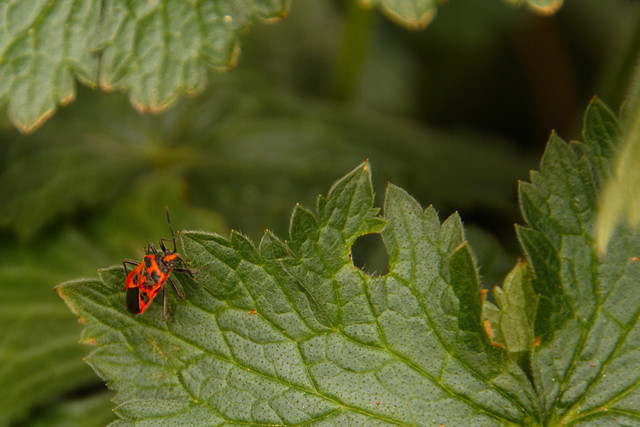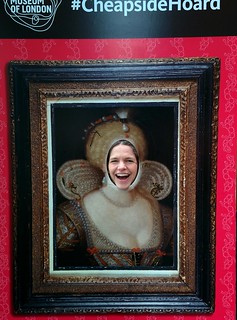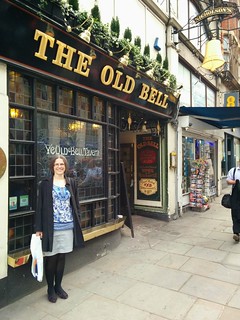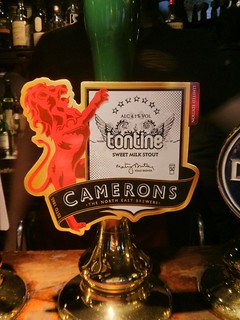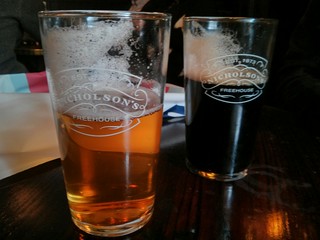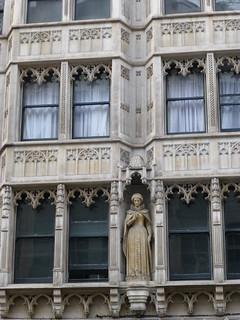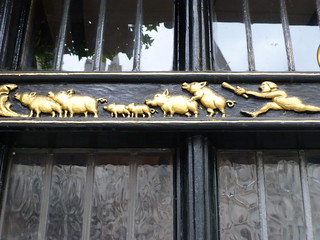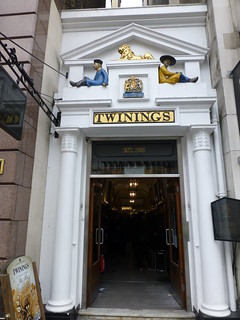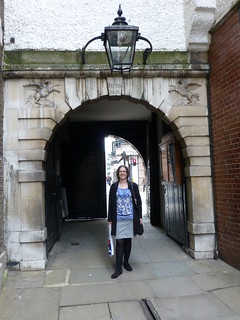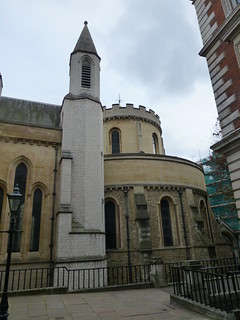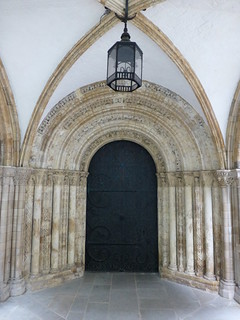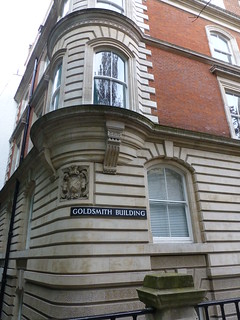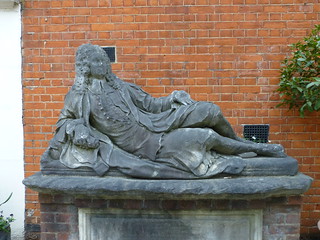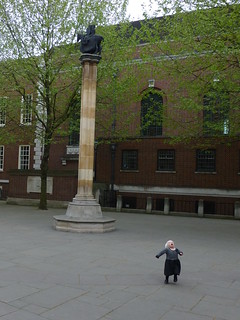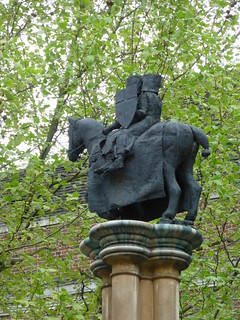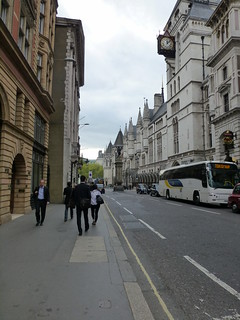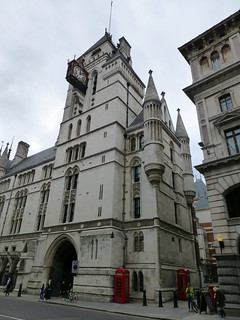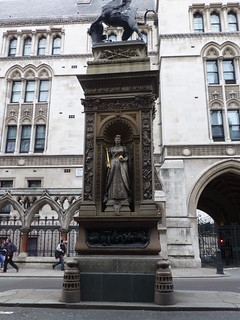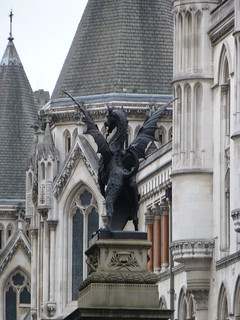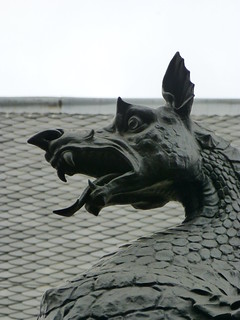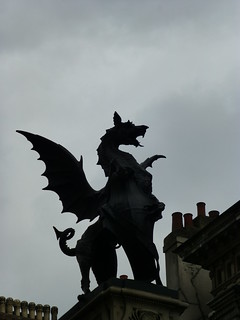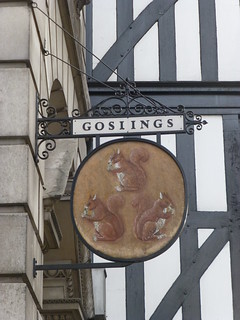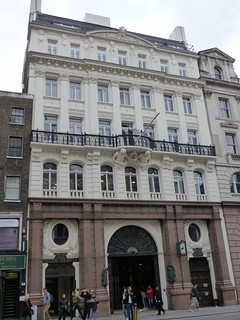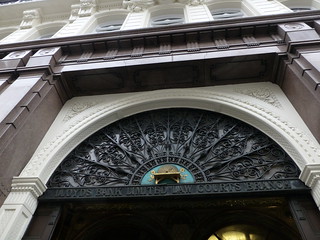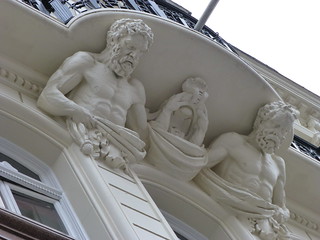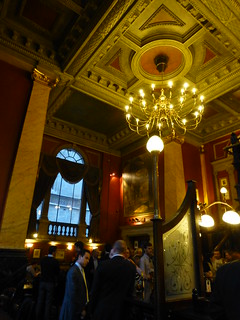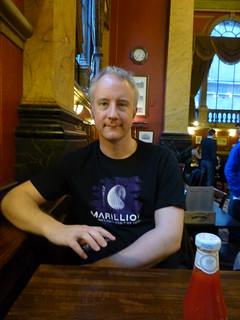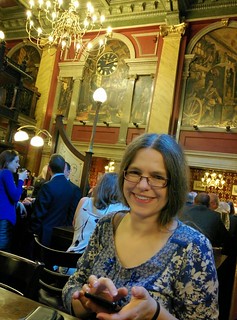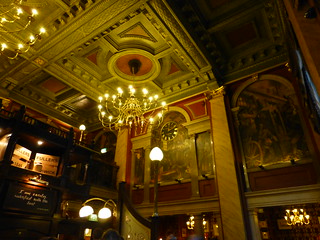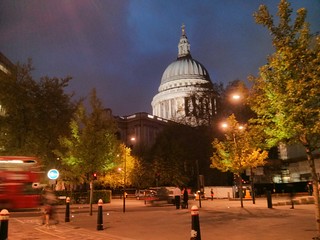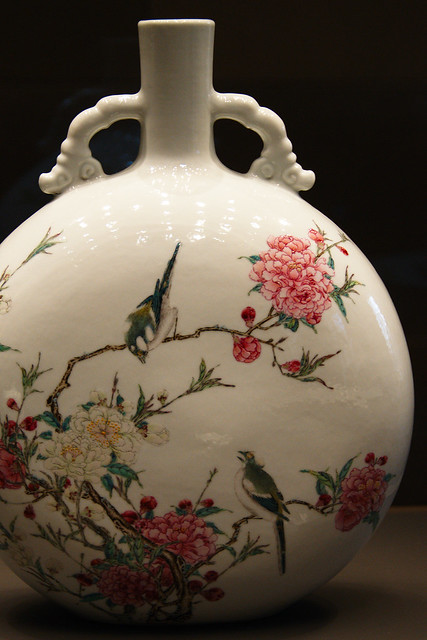The Plantagenets was a three part series about this dynasty of English monarchs presented by Robert Bartlett. He points out that this is the longest running dynasty of English kings, which I hadn’t realised – they stretch from Henry II (who takes the throne in 1154) right the way through to Richard III (who dies in battle in 1485). Bartlett covered them in chronological fashion, conveying some feel for the politics of the time and for the dysfunctional soap opera-like personalities and family relationships of the Plantagenets.
The first episode pretty much covered the context and then the first two generations of Plantagenets. Henry II actually ruled over a fairly large empire including not just England but quite a lot of what’s now France, which he’d acquired via inheritance and marriage. This part of the family is one of the more soap opera like bits – Bartlett explained the various rebellions against Henry by his own sons and even his wife. It wasn’t all internal family bickering however – this is also the time of Thomas Beckett and his murder after he fell out with Henry. The bickering and power struggles don’t stop after Henry’s death either. Richard the Lionheart rules England mostly in absentia and via first his mother then his younger brother John, with varying degrees of success. John succeeds Richard in a somewhat dubious fashion (a nephew, Arthur of Brittany, had a better claim but eventually meets with an “accident” in custody). John is also notable for annoying most of the aristocracy (this is the time of the Magna Carta) and for losing the bulk of the dynasty’s French lands.
The second episode covered the same era that my current non-fiction book is covering – from Henry III through to Edward III. But definitely aimed at a different audience in that Prestwich’s book is fairly dry and focused on the details and nittygritty of the politics, but Bartlett is pitching the TV series more towards the broad picture end of the spectrum. The focus of this era is shifting from the very French focus of the first part of the dynasty to a more English identity. Largely out of necessity, as John had lost most of the French lands. Conflicts between King & nobles in this time lead to the formation of Parliament as a key player in government. And the English Kings also start to look to the rest of the British Isles to satisfy their empire building tendencies – Edward I’s conquest of Wales, and the repeated attempts to control Scotland.
The third episode Bartlett called “The Death of Kings” – this is the decline of the Plantagenet dynasty into particularly bloody disaster. We start with Richard II, who was a great believer in the divine right of Kings and rather predictably alienated the aristocracy with this belief. He was deposed by a cousin of his – and was starved to death in custody. Bartlett positioned this as the first precedent of the deposition and killing of an anointed King, and thus the beginning of the end for the dynasty. I’d quibble, in that I’d see the deposition of Edward II as the first time that had happened in the Plantagenet dynasty – prior to that (like when Henry III lost a civil war) the King always remained King just not powerful in practice. But J pointed out that Bartlett was maybe drawing a distinction between being deposed in the name of your heir (ie Edward II -> Edward III) and being deposed by a relative who wouldn’t otherwise inherit. It does, at first, seem to’ve been a successful gambit by Henry IV and his son Henry V leads the dynasty to a new highpoint. Henry reignited a hot phase of the war with France, and was sufficiently successful to get himself declared the heir. Sadly he dies young (of dysentry) and while his infant son Henry VI does get crowned King in both England and France it isn’t to last – Henry VI isn’t a warrior King, in fact he’s pretty useless as a King at all. Bartlett didn’t have much time left in this programme to cover the Wars of the Roses in detail, instead focusing on the human side of it and getting us quickly to Richard III and the end of the Plantagenets.
I enjoyed this series – we’ve seen a few series Bartlett has presented and they’re always both entertaining and informative. It was slightly odd watching it at a point where I’ve recently read a much more detailed account of part of it because I did find myself thinking “well, yes, but what about …” rather more often than I would normally.
Keeping with the same general historical era we also watched Return of the Black Death: Secret History this week. This was right on the edge between interesting and irritatingly shallow. The most irritating bit was that before each ad break they did a little sequence of empty streets of modern London with a sinister figure standing on a rooftop and whispering the names of the dead. Once would’ve been OK, but over and over just felt like padding on an already pretty shallow programme.
The jumping off point for the programme was the excavation of some victims of the 1349 Black Death epidemic in London during the construction of Crossrail. They then talked about the extent of the epidemic, why we now think so many people died and what lessons we can learn in the modern era from this disaster. The programme showcased one historian’s research into the Wills of London merchants and tradespeople of the time – he’d used these to extrapolate to get a figure for the number dead. As presented on the programme it seemed somewhat of a stretch, so I rather hope that this was simplified too far! One bit of gimmickry that was actually very effective was that they staged readings of some of these Wills by people who looked like modern versions of the beneficiary of the will – like a teenage girl whose parents had both died within a month of each other. It was tastefully done and did humanise the data. They did some other chronicles and texts in a similar style, which was also effective.
The estimate they used was that 60% of the London population at the time died, and they all died within a few months. Londoners at the time were likely to be particularly vulnerable to disease because there had been a period of poor weather and bad harvests. But from talking to modern disease experts this is too fast for normal bubonic plague to spread and kill even taking that into account, so at first it was assumed this was a particular mutant form of the disease. However the skeletons that were dug up still had the disease present in their teeth, which meant that it could be sequenced and compared to the modern form. Surprisingly they were identical. The explanation was illustrated using some cases of plague from the early 20th Century in Shotley (near Felixstowe) – this too spread quickly and killed fast, and it’s known that this was a pneumonic form of the plague. The standard infection is spread by rats and their fleas, but if an infected person develops the pneumonic form then it is easily transferred from person to person – same disease, just a different place of infection and mechanism of spread. So this is likely what devastated London in 1349.
As well as using a modern example to look for explanations for the rapid spread, they also talked about how Edward III’s government’s response was not that far off a modern idea of how to handle things. Apart from the lack of good medical knowledge, of course. The particular example was that a cemetery was set aside for victims and steps taken to ensure the dead were buried rapidly but with proper ceremony. The expert from Porton Down talked about how this is necessary to keep morale up in the survivors, and indicated there are similar sorts of plans drawn up in case of disaster today.
Overall, a bit shallow and gimmicky but presented some interesting perspectives.
Other TV watched this week:
Episode 2 of Monkey Planet – series about the biology and behaviour of primates.
Episode 7 of The First World War – a 10 part series covering the whole of the war.
Episode 5 of Pagans & Pilgrims – series about the sacred places of Britain, presented by Ifor ap Glyn.
Britpop at the BBC – nostaglia programme about Britpop, using footage filmed by the BBC, mostly for Top of the Pops.
